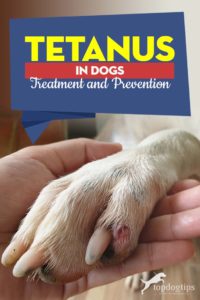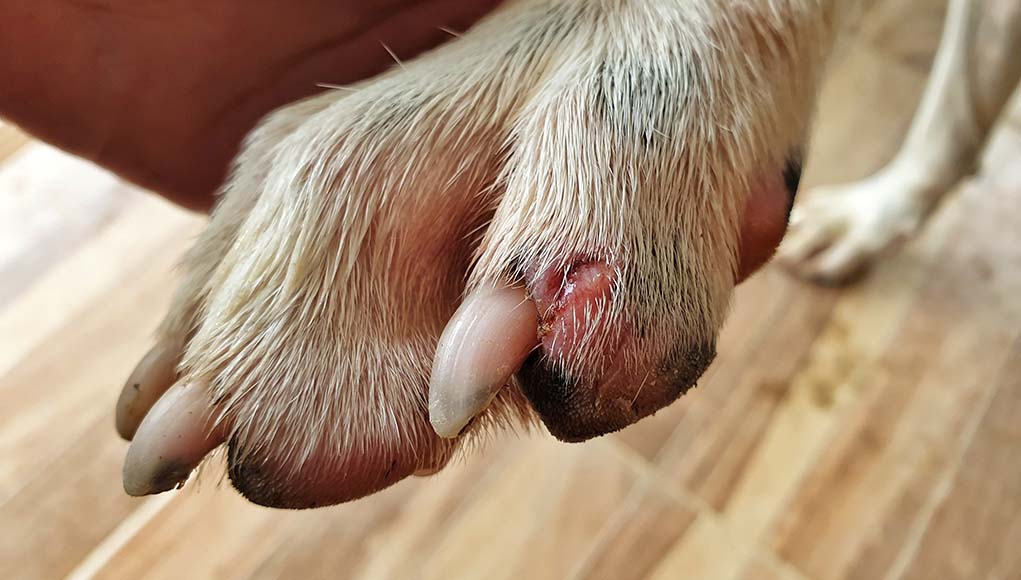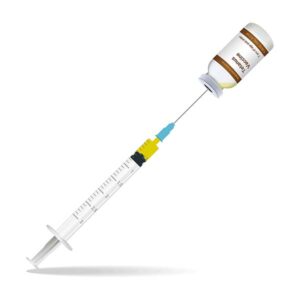The mere thought of your dog contracting tetanus can be a scary thing, especially if you are unfamiliar with the condition, but have heard of the multitude of frightening side effects and potentially deadly consequences for dogs with tetanus. As the age old saying goes, “knowledge is power”. And the more a dog owner knows about tetanus in dogs, including what causes tetanus, how to prevent it, and how it's treated, the easier this condition can be prevented or treated.
In order to provide a foundation for the discussion of the various tips for dealing with, and preventing tetanus in dogs, this article begins with a section that discusses and answers common questions and must know facts about this condition, followed by tips section on how tetanus in dogs can be dealt with and prevented.
Must Know Facts About Tetanus in Dogs
1. What is Tetanus?
Tetanus is a disease that is produced by a specific toxin that is secreted by a particular bacterium named Clostridium tetani. The Clostridium tetani bacteria can grow and survive without oxygen (because they are anaerobic). They are also a soil specific bacteria, meaning they like to live in soil and dirt. Therefore, this kind of bacteria is capable of, and will often grow inside of a dog's deep wound, puncture, bite, or any open sore that a dog has sustained, because the wound is often contaminated with dirt.
2. How Do Dogs Get Tetanus?
Contrary to popular belief, tetanus in dogs does not develop from being punctured by rusty, metal objects. As described above, the tetanus bacteria (Clostridium tetani) is especially attracted to open wounds, which could have been caused by a sharp, rusted, metal object, but tetanus has nothing to do with the rust or the metal that caused the wound; it has to do with the optimal conditions that the wound presents (i.e., full of dirt and lacking oxygen) for the tetanus bacteria to thrive within.
Similar to how staph infection in dogs develop, the puncture or dog wound that attracts and hosts this bacteria can come from any object or animal that is capable of piercing the skin, causing a wound that is then contaminated by dirt with Clostridium tetani bacteria in it.
3. How is Tetanus in Dogs Diagnosed?
Unfortunately, there is no blood tests or any kind of specific test that can determine if tetanus is present. The diagnosis of tetanus is typically determined based on the presence and history of a wound on the dog, and how the dog appears to the vet (i.e., if the dog is showing any symptoms of tetanus).
4. How Does Tetanus Progress?
The toxin that is produced in cases of tetanus is named tetanospasmin, and it is created by the Clostridium tetani bacteria that has gotten into the dog’s open wound. According to Dr. Wendy Brooks (DVM, DABVP) on VIN:
“The toxin binds to local nerves and migrates up into the central nervous system where it interferes with the release of glycine and GABA, both of which are inhibitory neurotransmitters. The result of this loss of inhibition is painful muscle over-activity, spasms, and rigidity. In severe cases, the patient cannot breathe because of the rigid paralysis of the respiratory muscles and a mechanical ventilator is required”.
The incubation period for tetanus can be anywhere between 3 to 21 days. But an incubation period of 5 to 10 days from when the original wound occurred is typical.
5. What are the Warning Signs of Tetanus in Dogs?
The toxins produced by the Clostridium tetani bacteria will first cause loss of the ability to blink, and a dog must use their third eyelid to moisten their eyes. Sunken eyes can sometimes be observed in the dog. Extreme sensitivities to light and sound can also develop, and a normal sound, such as hand-clapping, can cause the tetanus infected dog to have seizures.
The dog’s facial muscles will pull back unnaturally, to such an extreme that it creates a side effect of tetanus that is known as “risus sardonicus or sardonic smile”. Also, if a dog has floppy ears, the tetanus toxin can cause the dog’s ears to stick straight up. As tetanus progresses to advanced stages, muscle tremors and spasms develop, and the dog may have difficulty walking, to the point that they can no longer walk or sit down, and can only stand in a stiff and rigid stance with an erect tail.
The dog is also at risk of aspirating saliva or food into their lungs. A locked jaw is another common symptom tetanus in dogs. If this occurs, it will become impossible to feed the pet. Furthermore, if the respiratory organs and muscles are impacted, the animal can lose their ability to breathe effectively, which can lead to respiratory arrest (the dog will lose the ability to breathe on their own).
Thankfully, in cases of tetanus in dogs, localized side effects of the toxin are more common than generalized (whole body) symptoms, meaning that oftentimes only a single limb, or areas located closest to the original wound on the dog will experience the rigidity and side effects of tetanus.
But it is important to note that the localized condition can spread to a generalized one, especially if not treated promptly. Because the initial warning signs of tetanus in dogs appear in their eyes, tetanus is commonly mistake for an onset of an eye disease in its initial stages. If your pooch is behaving differently, and has a wound anywhere on the body, even if one is not visible to you, it's always best to take them to a veterinary clinic.
6. How Long Does Recovery from Tetanus Take?
A dog’s condition will usually improve within the first week of treatment if tetanus was caught and properly treated in the early stages by your vet. It can take the dog a month or longer to make a complete recovery from tetanus, depending on how advanced it was.
How to Deal with Tetanus in Dogs
Antibiotics
The first step to eliminating tetanus from the dog’s body is by using prescription antibiotics to kill the Clostridium tetani bacteria. Fortunately, no unusual or pricey antibiotics are required, because the common and often inexpensive penicillin will work. If a dog is allergic to penicillin, or it does not work for some reason, there are other antibiotics that can be prescribed for this purpose.
Antipsychotic Drugs
Two drugs within the class of antipsychotics, called chlorpromazine and acepromazine, are commonly used to treat a dog’s sensitivity to light and sound that is caused by the tetanus toxin.
Dark Room
If a dog is released from the care of a veterinary hospital, and is allowed to finish recovering from tetanus at home, your pup will need to be placed in a dark and quiet room that has little to no sources of audiovisual stimulation within it.
General Anesthesia
If a dog’s respiratory system has been negatively impacted by the tetanus toxins, they might need to be kept under general anesthesia to have the necessary medical help that they need to breathe, which can consist of an endotracheal tube (which is a tube that is placed in the windpipe in order to keep the airway open), or an inhaler or even a mechanical ventilator (which is a machine that is used to assist in, or replace the act of breathing, when the dog is unable to do so on their own).
Liquid Diet
Having locked or clenched jaws due to the tetanus toxin can cause the dog to lose their ability to eat solid food, making a liquid diet such as different soups, bone broth and so forth which provide all of the nutrients the animal needs mandatory, while the dog recovers from the tetanus toxins.
Sedation
Other forms of sedation (such as sedative pills) can also be used to control the dog’s muscle spasms and seizures, if any are present.
Soft Bedding
Because the dog can become somewhat paralyzed as a side effect of tetanus, he or she will spend a majority or even all of their time laying down and will need an extra soft bed to lay on in order to prevent them from developing bed sores.
Tetanus Antitoxin
An antitoxin is an antibody solution, which is a blood product that is taken from either a human or horse, to be injected into the dog that has tetanus in order to find, bind to, and eliminate the tetanus toxin.
Whether or not a tetanus antitoxin should be administered to dogs is a widely debated topic. Because “there is a risk in using antitoxin because it is a blood product of another species and highly inflammatory to the immune system,” explains Dr. Brooks in the article hyperlinked above.
Additionally, the antitoxin cannot do anything to help to remove the tetanus toxins that are already bound to the dog’s nerves; this has to be done by the toxin over a period of time. And the tetanus antitoxin will only be moderately helpful and only in the beginning stages of this disease. Therefore, the risk of using this tetanus antitoxin is often not worth the minimal reward.
How to Prevent Tetanus in Dogs
Tetanus Antitoxin Shot
The tetanus toxin shot is a preventative shot that most humans have had, at least once in their life, because it is the commonly used vaccination that is given to people. However, because dogs are much more resistant to tetanus, naturally, this vaccination is not recommended for dogs, as the risks (described directly above and in the hyperlinked article about tetanus in dogs) often outweigh the rewards.
Protection, Observation, Cleanliness
Because it is not recommended that dogs receive the tetanus toxin vaccination as a preventative method, the best ways to help prevent a dog from getting tetanus are to:
A) reduce the risk of getting punctured wounds, bites, or open sores;
B) as a part of your daily care routine with your pup, check every part of the dog’s body / skin for any kind of open wounds;
C) if you see that your pet has sustained any kind of cut, puncture, bite, or has an open wound, clean it well, and continue to keep that area clean and free of soil, dirt, and debris for the entire time that the wound in healing.
For more scientific details, read this case-study published by the Canadian Veterinary Journal that details the diagnosing, progression, treatment, and outcome of the tetanus disease in a dog.
READ NEXT: 10 Essential Home Remedies for Dogs to Have at Home















